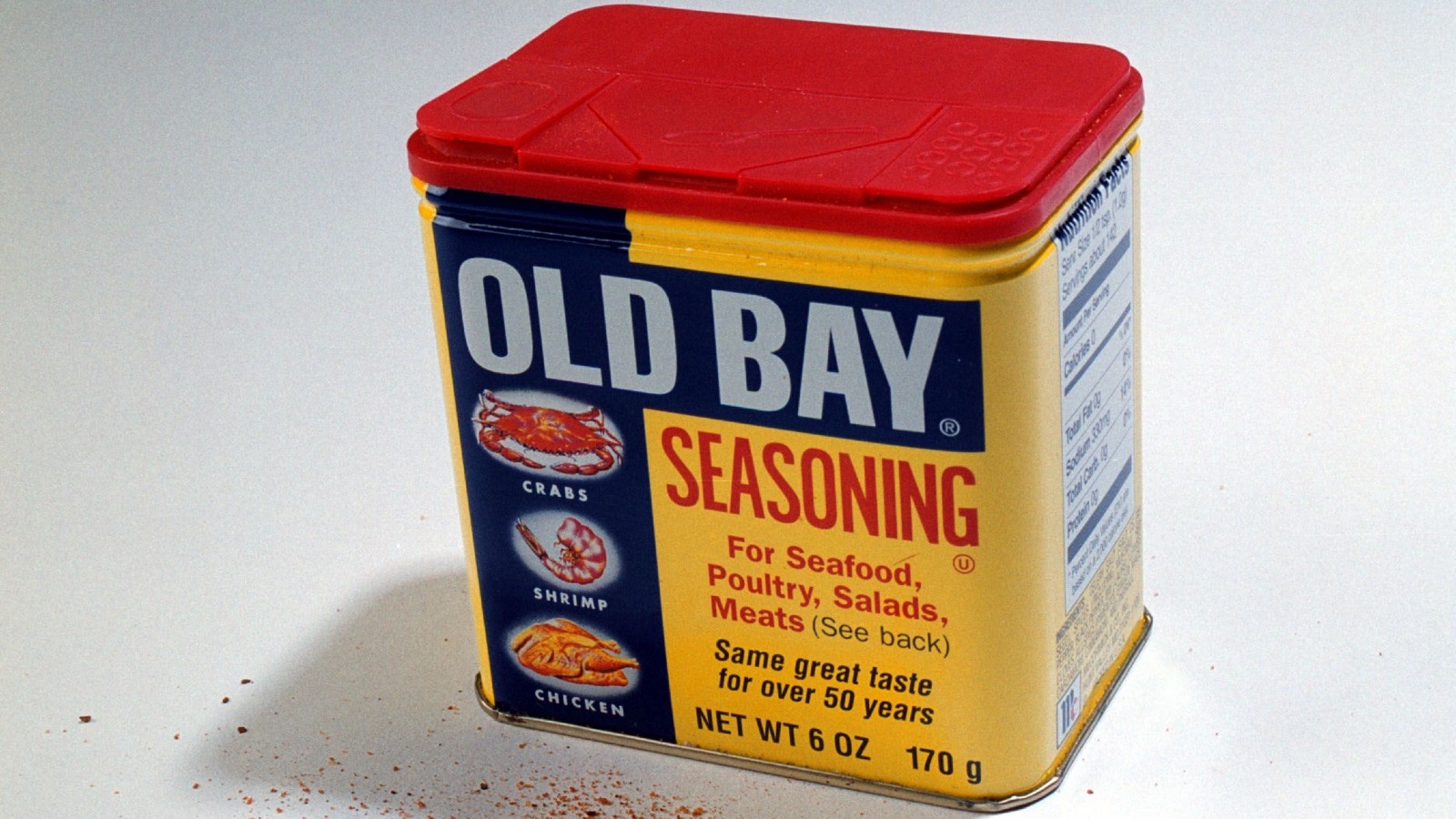Old Bay — the zesty, saliferous, burnt orange spice synonymous with seasoning shellfish — was invented by Gustav Brunn, a German Jewish refugee who landed in Baltimore after spending two weeks in Buchenwald concentration camp.
There are few spice blends as ubiquitous as Old Bay. Packaged in the classic yellow, blue, and red tin can, Old Bay has grown from a Baltimore favorite to a pantry staple across the United States.
Before Old Bay was invented in the 1940s, steamed crab, the dish most associated with the blend, was absent from regional cookbooks, including Mrs. B.C. Howard’s Fifty Years in a Maryland Kitchen and Mrs. Charles Gibson’s Maryland and Virginia Cookbook.
How did Brunn, a man who miraculously escaped Nazi-occupied Germany, revolutionize the way Americans eat crab?
The Nosher celebrates the traditions and recipes that have brought Jews together for centuries. Donate today to keep The Nosher's stories and recipes accessible to all.
The story begins in 1906 in the town of Bastheim, Germany, when Gustav Brunn was 13 years old. He quit school because it was too expensive and began working as a tannery apprentice. In 1923, the value of the German mark plummeted and in turn, the fur business collapsed and the tannery closed. Brunn bought the store and began selling cases and spices to sausage makers, the beginning of his career in the spice industry.
Brunn’s spice business was a success. That was, until 1933 when Hitler came to power. According to the Baltimore Jewish Times, as anti-Semitism grew, Brunn lost customers and his bookkeeper resigned out of fear that the Nazis would punish him for working for a Jew. To protect his family and his livelihood, Brunn moved his shop to Frankfurt where there was a larger Jewish population.
In 1937, Brunn and his family applied for visas to the United States. The plan was to leave by the end of 1938, but that changed on the night of November 10, 1938, Kristallnacht, the mass pogrom that destroyed synagogues, Jewish business, and schools, and the first time the Nazi regime arrested Jews on a massive scale.
The next day, radio announcements called for all Jews to surrender their firearms to the nearest police station. Brunn, an avid hunter with eight rifles, complied. Upon arriving at the police station, he was told that he couldn’t leave. Within hours, Brunn was taken to Buchenwald concentration camp.
Remarkably, after two weeks, Brunn was released, bearing a shaved head and suffering from pneumonia. Brunn’s early release was arranged by a Frankfurt lawyer for 10,000 marks, a hefty price at the time, who bribed the Gestapo. Within a week, Brunn, his wife, and their two children sailed for America, bound for Baltimore, with his hand-crank spice grinder in tow.
Brunn struggled to find work in Baltimore and finally landed a job at McCormick & Company, the world’s biggest spice maker. According to The Baltimore Sun, Brunn’s son Ralph recalls that after only a few days, McCormick learned that Brunn was Jewish, and fired him, directing him “to go and see the Jewish charities.”
Brunn did not give up on his career in the spice industry. He opened his own store, the Baltimore Spice Company, on the second floor of 26 Market Place, across from the bustling fish market. Soon, seafood vendors were stopping in his store, searching for spices for steaming crabs. Brunn took note of what they ordered — a mix of pepper, salt, and mustard — and began experimenting with his own blends.
Enter Old Bay, a kitchen sink of 18 spices, including mustard, paprika, celery salt, mace, nutmeg, cinnamon, bay leaf, red pepper, cardamom, celery seed, cloves, laurel leaves, mustard, salt, pepper, and ginger. Ralph told the Baltimore Jewish Times that, to his father’s amazement, “Those minor things he put in there — the most unlikely things, including cinnamon and nutmeg and cloves…had nothing to do with crabs at all — gave a background bouquet that he couldn’t have anticipated…Old Bay, per se, was almost an accident.”
Brunn gave samples of his new spice blend to the seafood vendors across the street, who offered Brunn’s sample to customers. Over time, Brunn’s blend caught on.
With a popular product, Brunn needed a catchy name. His friend in advertising suggested “Old Bay Seafood Seasoning” after the Old Bay Line, a well-known Baltimore steamship company. Brunn trademarked “Old Bay,” giving his spice blend an instant feeling of tradition and a strong regional identity.
McCormick, intimidated by Old Bay’s rising demand, began packaging their crab seasoning in identical cans. Then, when Brunn attempted to join the American Spice Trade Association, McCormick threatened to leave. Over the years, McCormick tried to buy the Old Bay brand, but Brunn rejected every bid.
Since McCormick couldn’t buy Old Bay, they were determined to copy it. The spice conglomerate relied on a law that required companies to declare the ingredients on the back of packages. Brunn, aware of this possibility, kept his recipe safe by omitting his four main ingredients.
In 1985, Brunn passed away at 92 years old. In 1990, after a fifty-plus year rivalry, McCormick bought Old Bay for between $11 million and $14 million.
There are few, if any, spice blends with a fandom like Old Bay. It can be found tattooed on people’s arms, printed on socks, swirled into the caramel ice cream at Maryland’s The Charmery ice cream shop, mixed in the tartar sauce on McDonald’s fish-filet sandwich, and infused in Old Bay Summer Ale from the Maryland-based Flying Dog Brewery. Last year, Old Bay even released a limited-edition hot sauce that sold out in one hour.
Old Bay is more than just your favorite spice — it’s a story of the discrimination that Jewish immigrants faced, their perseverance against such hate, and their contribution to the American identity and kitchen.



